Sycamore trees, renowned for their grand stature and distinctive features, are a fascinating subject for those interested in dendrology or simply in awe of nature’s magnificence.
One of the most captivating aspects of these trees is the presence of sycamore tree balls, which hang prominently from their branches.
These spiky seed balls are not only a key characteristic for identification but also play a crucial role in the tree’s life cycle.
Sycamore trees, including varieties like the American, Mexican, and California Sycamores, possess unique traits that make them easily recognizable and widely admired.
This guide delves into the different types of sycamore trees, highlighting their distinct leaves, bark, and fascinating sycamore tree balls, providing a comprehensive understanding of these majestic trees.
What is a Sycamore Tree?
These trees are deciduous and huge, with a large crown of lush green foliage.
These trees are also called Buttonball trees or Buttonwood trees.
These names come from the fact that the balls of around an inch hang on the tree all winter and fall off during summer.
These balls have their separate twig on which they hang.
There is nothing in a sycamore tree that will not amaze you if you are a newbie to them.
From their leaves to barks, everything seems unique and beautiful. Their uniqueness makes it easy to identify them in forests or other places.
So, if you are willing to know about the sycamore trees and wish to identify and explore them, keep reading.
Here, we have a whole guide on how you can identify a sycamore tree, what its features are, and how you can grow it.
There are six main types of sycamore you would find out there.
A sycamore tree, in general, can be identified by its common features. Let us see what these features are.
Identification of A Sycamore Tree By
1. The Leaves
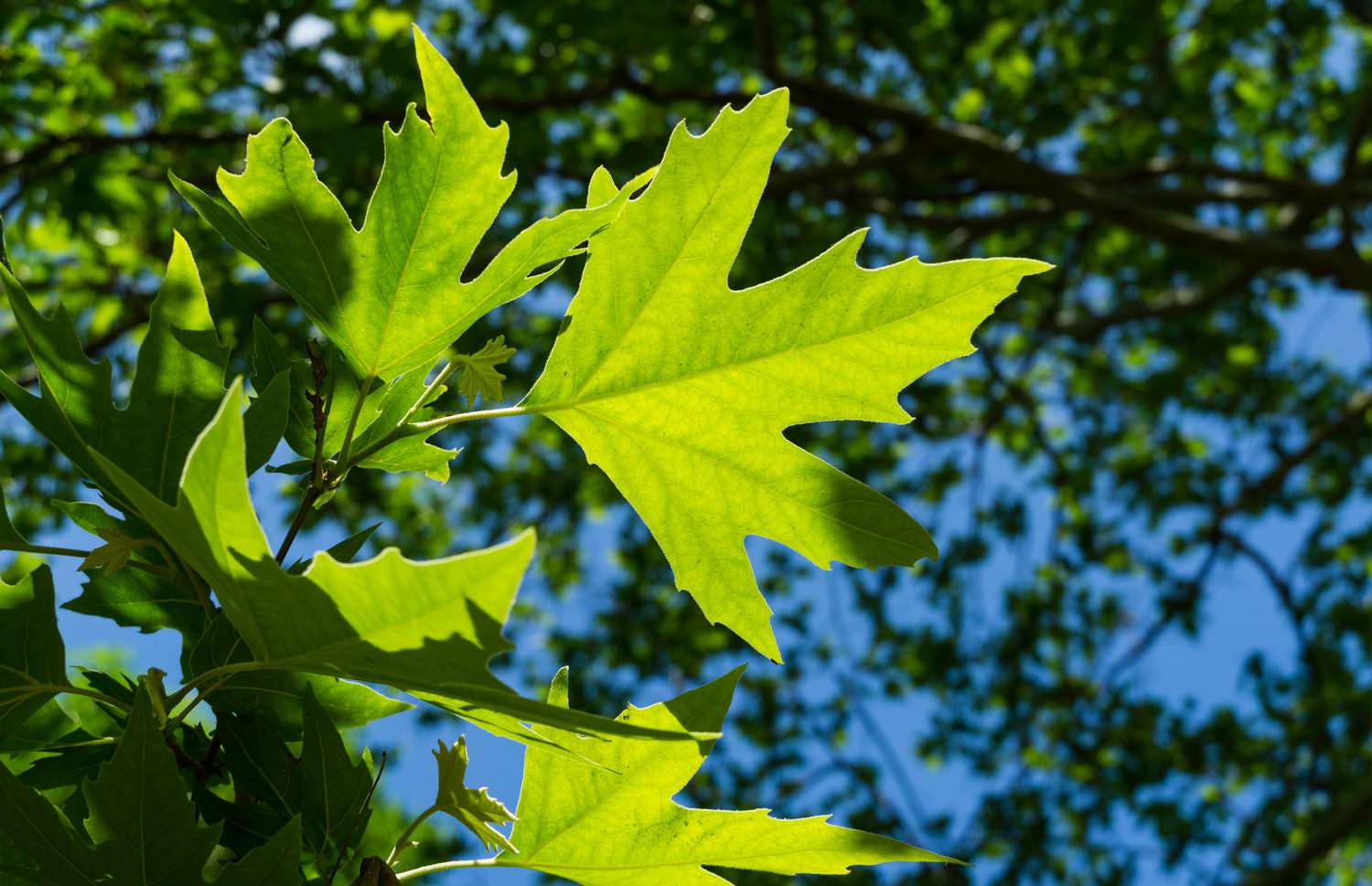
You will find the sycamore trees with large, serrated leaves with three or five lobes.
Their leaves show light green colour with detailed veins running to the pointed tips.
These large leaves grow alternately, around 10 to 17cm in diameter.
The sycamore tree leaves also offer fall foliage in shades of brown and yellow.
If you have witnessed a maple tree, you may confuse a sycamore leaf with that of a maple.
This is because some of the maple leaves look like sycamore leaves.
One major difference that can be noticed between both the leaves is their growing arrangements.
A leaf from a sycamore tree grows alternately, while a maple tree’s leaf would grow in the opposite arrangement.
2. The Barks
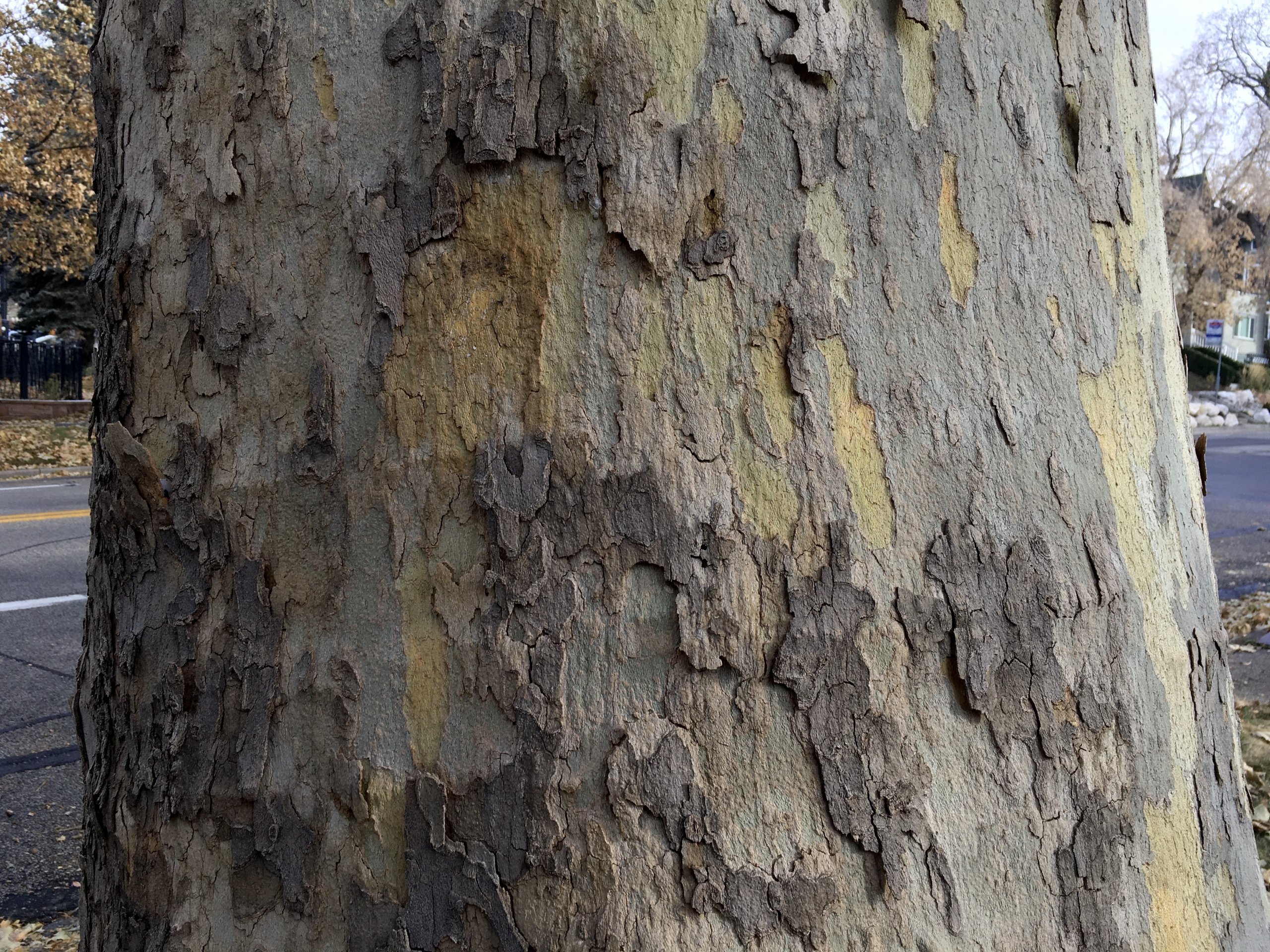
The bark of a sycamore tree is usually thin and flaky.
The barks make it easy to identify a sycamore tree from anywhere because of its appearance.
The bark exfoliates in patches and shows patches in shades of grey, white, and brown.
These patches altogether bark a camouflage look from a distance.
So, if you ever find a tree with a camouflaged appearance next time, know that it is a sycamore tree.
3. The Seed Balls
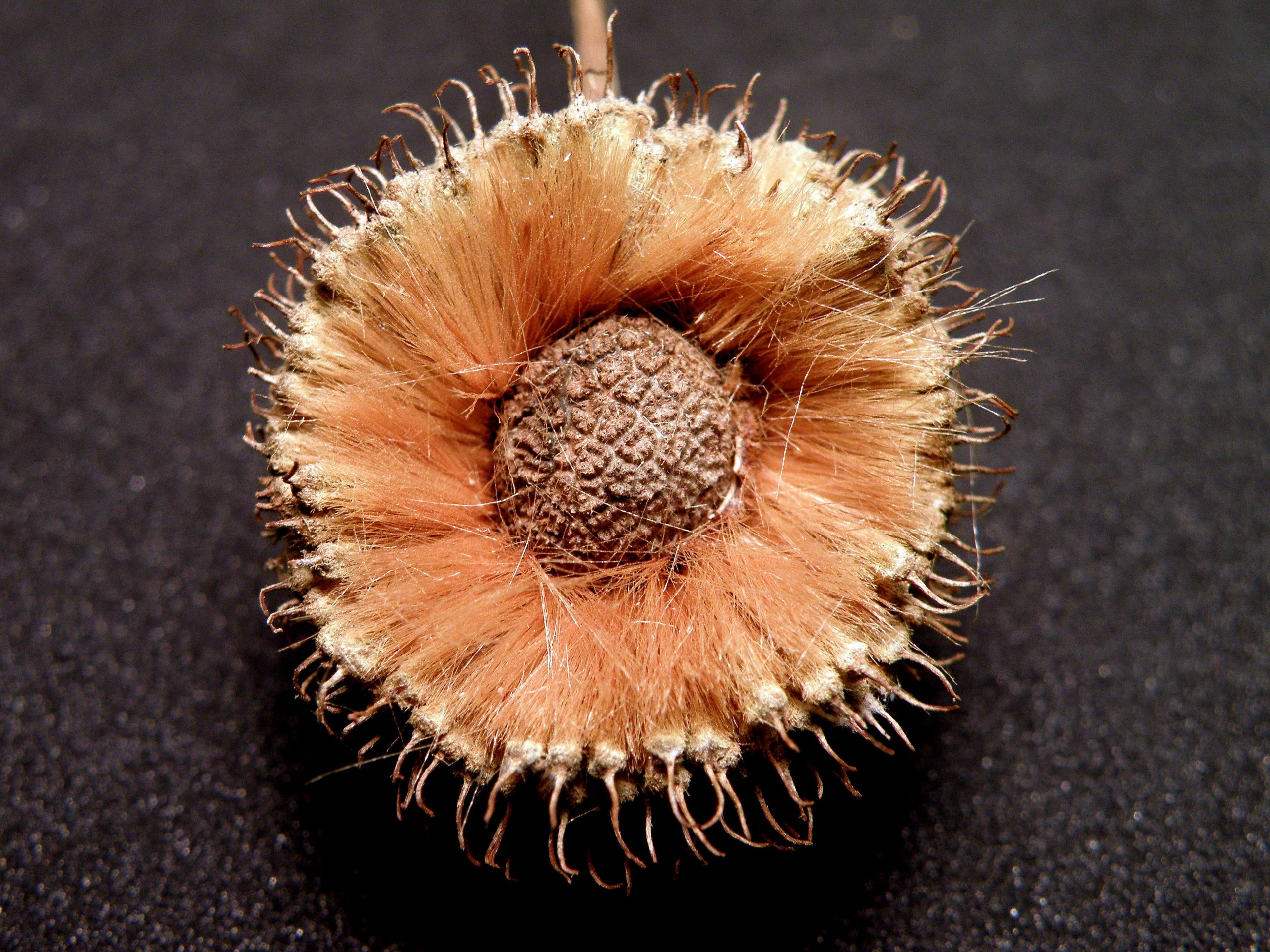
As discussed earlier, sycamore trees are also very popular because of their seed balls.
Sycamore trees produce spiky seed balls that are around an inch in size.
These balls grow in the winter and eventually fall off in the spring.
When these seed balls are immature, they would be found in green color. But once matured, these balls turn brown.
Tufts of fluffy, small, winged seeds grow on these balls. Also, these seeds disperse in the spring when the balls fall off the tree.
Apart from the above-mentioned common features, the sycamore tree has six different types. Let us know about these types and their features.
Types of Sycamore Trees
1. American Sycamore
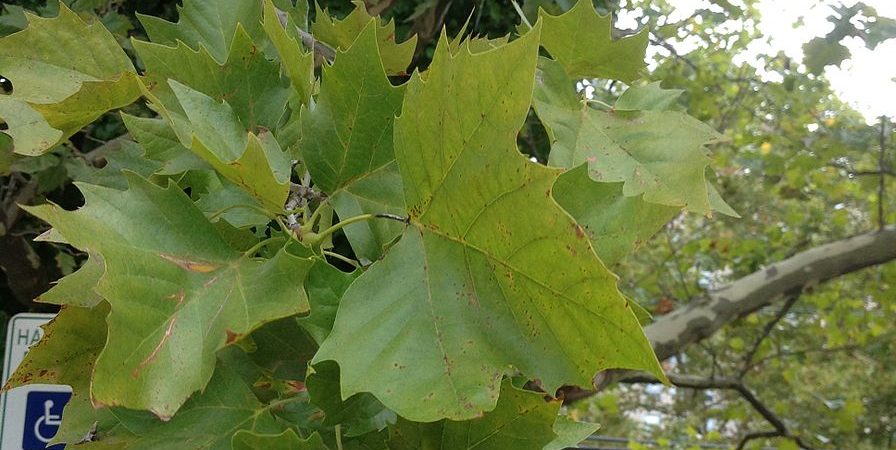
The American Sycamore is a majestic deciduous tree, one of the largest in the Eastern United States.
It grows to an impressive height of 90-120 feet with a massive trunk diameter exceeding 10 feet, making it a striking presence in its natural landscape.
The tree’s broad, maple-like leaves are about 10-22 cm long, with three to five lobes and shallow indentations.
These leaves display a seasonal color transition from light green in spring to dark green in summer, and then to yellow and brown in the fall.
American Sycamores are easily identifiable by their unique bark, which exhibits a reddish-brown color that peels off in large flakes, revealing a grey and pale white underbark, creating a mottled, camouflage-like appearance.
This tree is commonly found along rivers and wetlands in the eastern U.S. and was historically planted as a shade tree in urban areas.
However, its extensive root system can interfere with infrastructure.
It thrives in USDA zones 4 to 9 and can grow up to 2 feet annually under optimal conditions, favoring moist, well-drained soils.
2. Mexican Sycamore
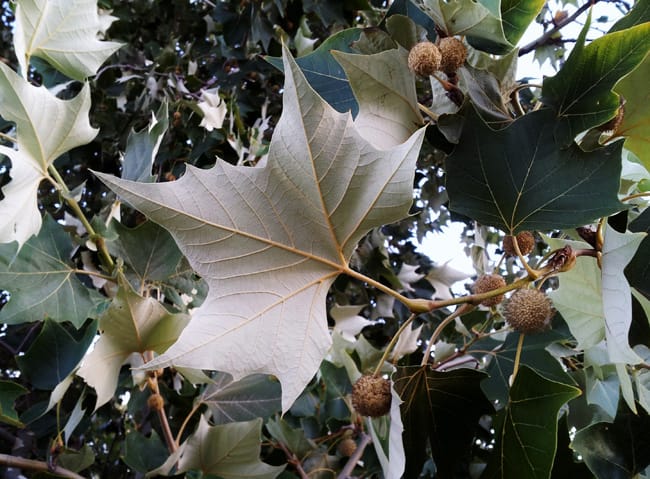
The Mexican Sycamore is a relatively smaller but still sizable deciduous tree, typically reaching heights of 40-50 feet, and in some wild areas, up to 80 feet.
It’s native to northeastern and central Mexico and is recognized for its drought tolerance once established.
The tree’s leaves are large, maple-like, and about 8 inches wide, with five lobes in an olive-green shade.
Mature leaves develop dense white hairs underneath, giving them a velvety silver appearance.
The Mexican Sycamore’s smooth bark showcases a white and light brown coloration with a patchwork pattern upon maturity.
While it’s suitable for ornamental use in residential gardens, care should be taken due to its aggressive roots.
This species is more resistant to bacterial leaf scorch than its American counterpart but can be affected by powdery mildew and anthracnose.
It bears flowers and seed balls, with the latter appearing from April to August. The Mexican Sycamore thrives in full sun in USDA zones 5 to 9.
3. California Sycamore
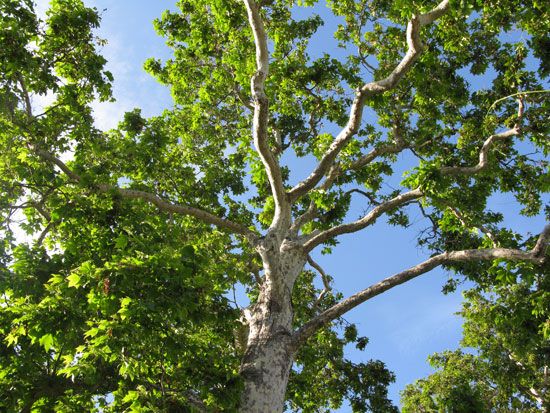
Also known as the Western Sycamore, the California Sycamore is a large, drought-tolerant deciduous tree that can grow up to 100 feet tall with a trunk diameter of about 5 feet.
It’s notable for its fast growth, adding about 30-35 inches annually and having a lifespan of up to 150 years.
In its young stage, it has a pyramidal shape which becomes more irregular, oval, or rounded as it matures.
The tree’s bark is thick and rough at the base, becoming thinner and smoother higher up, with a color transition from dark grey or brown at the base to ashy white.
Its leaves are large, 3 to 5 lobed, up to 10 inches long and wide, glossy green on top with matte green undersides, and turn to orange and yellow in the fall.
The California Sycamore produces tiny flowers in dense spherical clusters and is characterized by its fuzzy, tan-colored seed balls in the fall.
It prefers full sun and grows best in moist soils but is adaptable to a range of soil types, including alkaline and acidic.
4. Arizona Sycamore
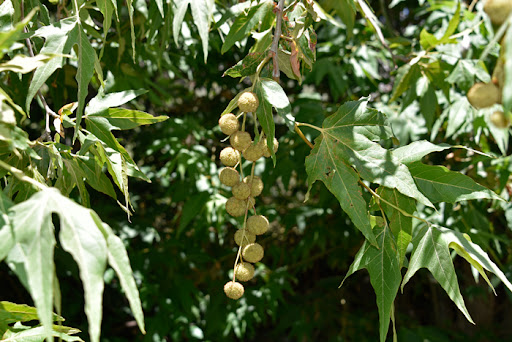
The Arizona Sycamore is native to Arizona and Mexico and stands as a robust deciduous tree, reaching heights of up to 80 feet with a similar spread.
Unlike its relatives, it requires a consistent water supply and is not as drought-resistant.
Found predominantly in desert regions of the United States, it thrives well in USDA zones 7 to 11 near rivers and streams.
The tree’s leaves resemble those of a maple, with 3 to 5 deep lobes spanning 4 to 6 inches in width and maintaining a green color throughout the year, shifting to golden and brown hues in the fall.
This species is noted for its high resistance to anthracnose.
Its fruits and seed balls are similar to other sycamores, with tiny reddish flower clusters and fuzzy, tan-colored seed balls dispersing in winter.
The Arizona Sycamore’s trunk is usually light grey, peeling off to reveal white patches as it matures.
5. Old World Sycamore
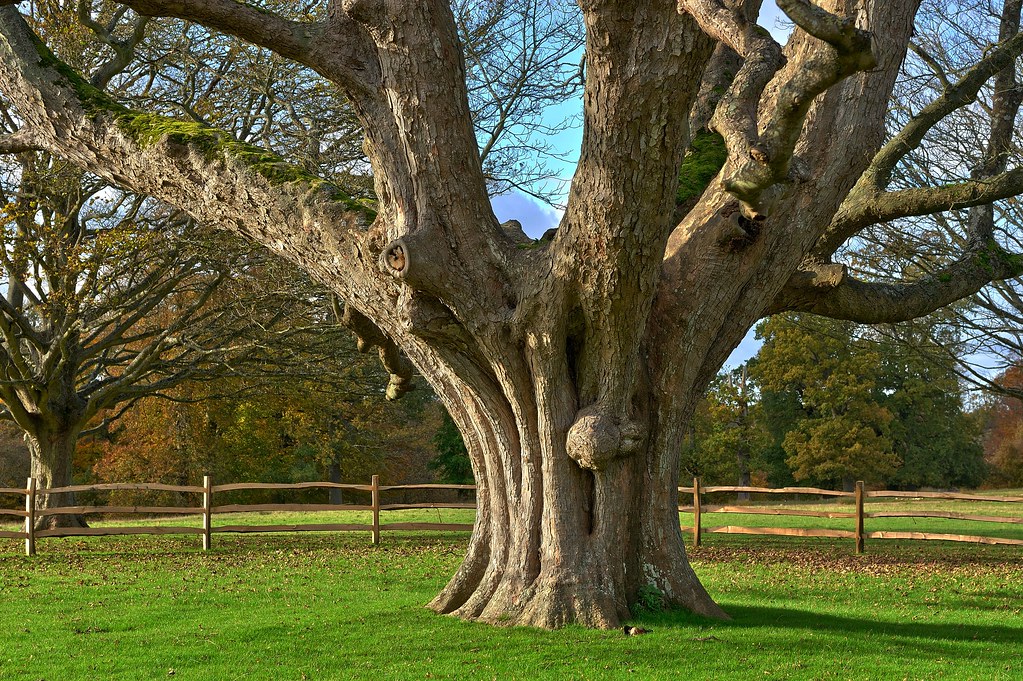
The old-world sycamores (Platanus Orientalis), also known as oriental planetree, are large deciduous trees (just like every other sycamore).
While growing up to 100 feet tall, this sycamore tree is known for its long life span and spreading dense crown of leaves and branches.
This species of sycamore is native to Eastern Europe and the Middle East.
When it comes to leaves, the old-world sycamore tree shows thick and large leaves that grow up to 10 inches wide.
These maple-like leaves come in medium to dark green color and show 5 to 7 lobes with serrated edges.
Deep notches can also be found between the lobes. The green leaves turn into red, amber, or yellow shades in fall. The bark of this sycamore grows thick and rugged.
The color of the bark usually is in shades of brown and grey, which flakes off to show white patches. Flaking off the bark starts only after the tree has matured.
6. English Sycamore
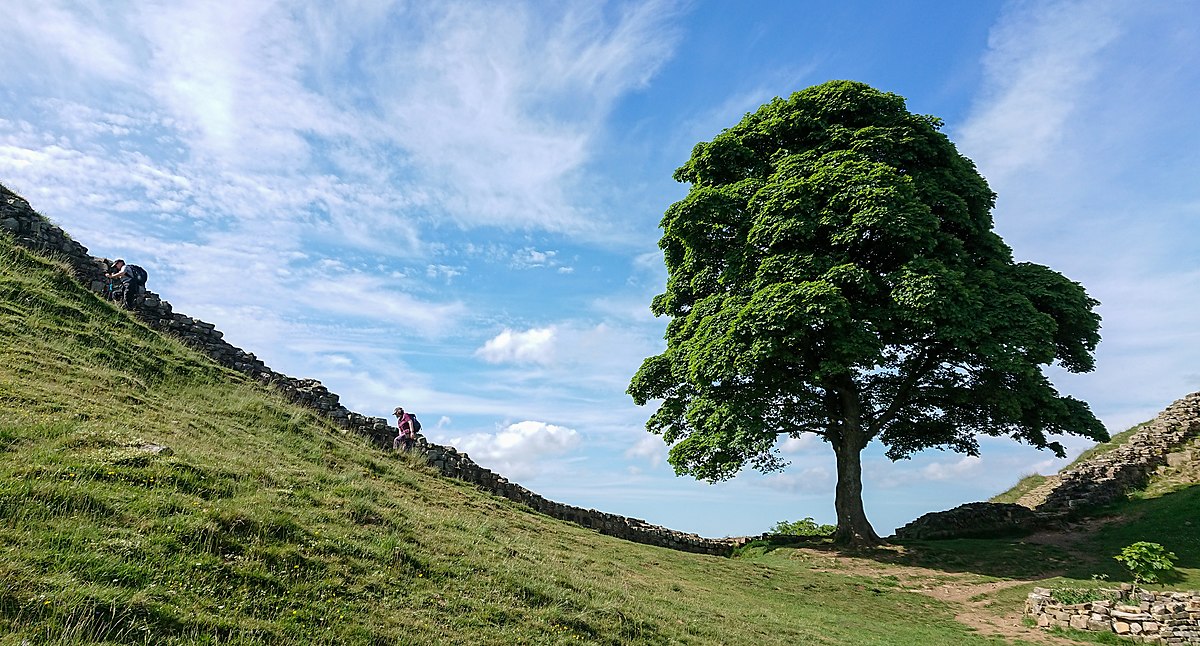
The English Sycamore, or London Plane, is a hybrid between the American and Old World Sycamores, originating from Spain.
It’s a large, spreading tree used primarily for shade, growing 80-100 feet tall.
This tree is hardy in USDA zones 5 to 9 and requires regular irrigation.
It produces clusters of tiny yellowish-green male flowers and crimson-red female flowers.
Its leaves are 7-10 inches large, with three to five lobes and deep clefts, exhibiting coarse teeth along the margins.
The leaf color remains medium to dark green throughout the year, turning to dull yellow and brown in the fall.
The bark is smooth, greyish brown, peeling off to reveal a creamy white underneath as the tree matures.
A distinguishing feature is its seed balls, which grow in pairs, aiding in its identification.
7. Sycamore Maple Tree
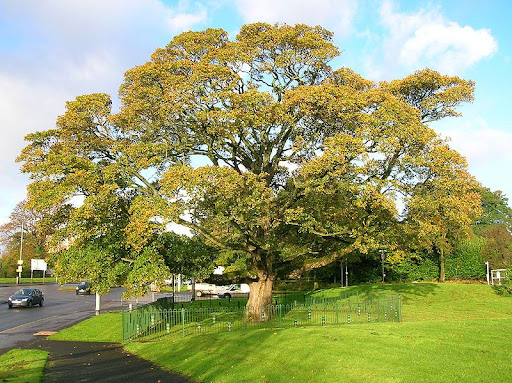

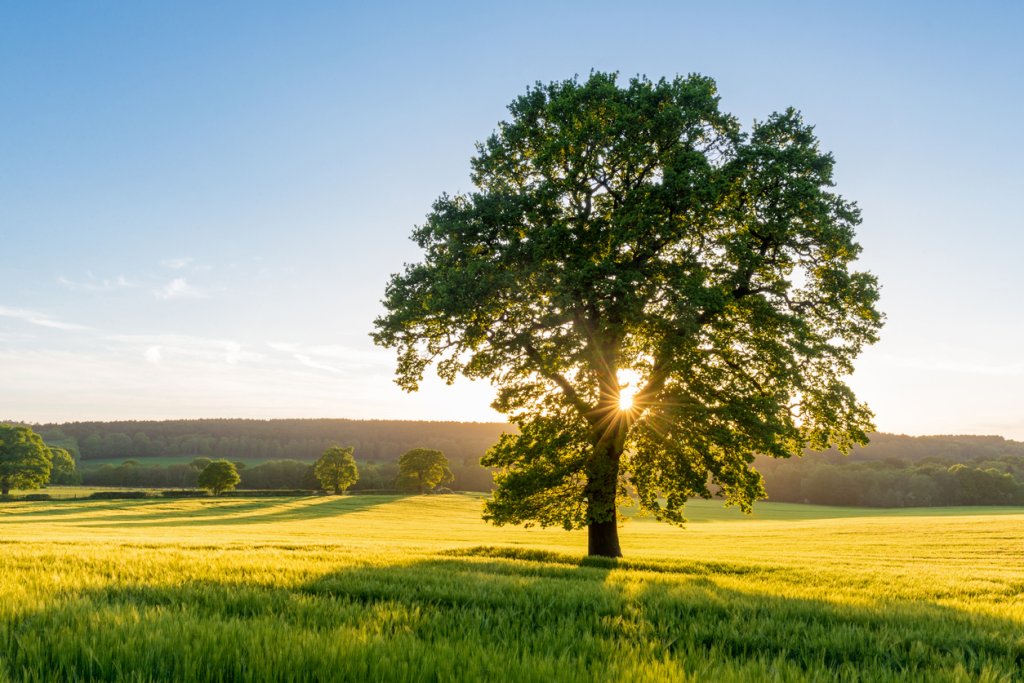
I’m just buying a home in Central Florida Summerfield Florida and it has a big sycamore tree but people keep telling me about these little bugs on them that fly and bite what is that about thank you so much for any input